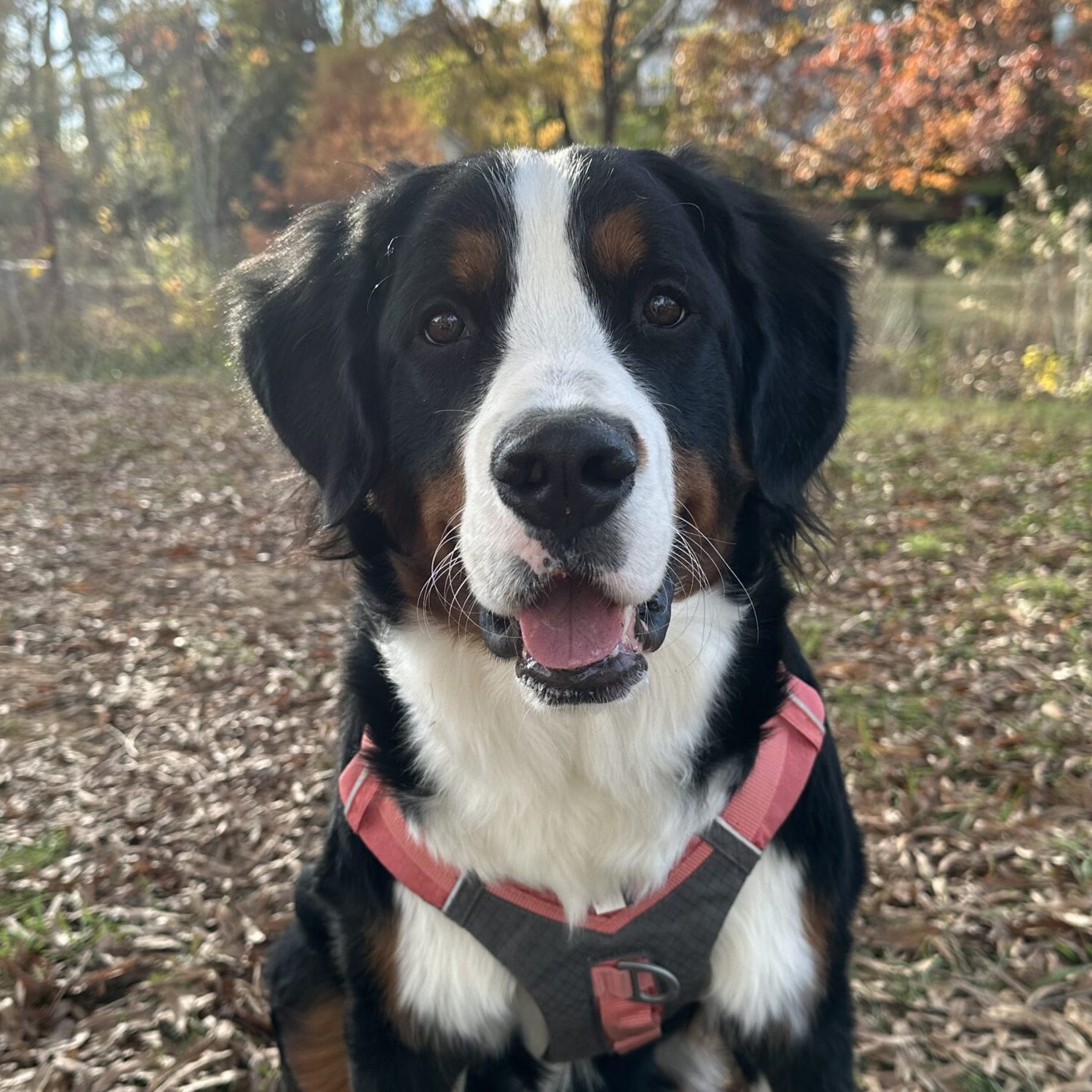Rosie is our one-year-old, 75-pound Bernese Mountain Dog who’s adorable, goofy, and full of energy. Training her has been an exciting (and sometimes challenging) journey. Below, we’ll share what we’ve learned along the way.
Are Bernese Mountain Dogs Easy to Train?
We decided to try to train Rosie by ourselves vs. hiring a trainer mostly because of the cost.
- General Temperament: Bernese are often considered easy to train because they’re loyal, obedient, and intelligent.
- Challenges: They can still test your patience! Rosie isn’t very food motivated, so the usual treat-based methods didn’t work well for her. We had to try lots of different techniques before we finally settled on a method that worked.
Why You Need to Train a Bernese Mountain Dog
- Pulling: As a working breed, Bernese naturally like to pull. If you don’t address this, a big dog like Rosie can drag you along on walks.
- Overexcitement: Rosie loves people so much she’ll jump or lean on them, which can knock someone off balance. This can be really bad when she’s meeting small children or elderly folks. Nobody wants to be jumped on, especially by a big dog.
- Loud Bark: Even a single bark from Rosie can trigger other neighborhood dogs to join the chorus! We live in a community with lots of dogs so you can imagine the chaos that can ensue.
- Mouthing During Play: All dogs love to play, but one of the ways they play is by grabbing things (clothes, leashes, hands…) with their mouths. They need to know how to play calmly and respectfully with other people and dogs
How to Train a Bernese Mountain Dog
We tried various techniques to figure out what worked best for Rosie:
1. Treats
- Traditional Treats: Rosie quickly lost interest. She’s more interested in people and other dogs.
- Peanut Butter on a Spoon: This method is supposed to distract during walks so she won’t pull so much. Worked for a bit, but she preferred the sights and smells outdoors. Also, she has a big tongue so the peanut butter didn’t last long!
One side note if you’re dealing with a puller – a harness is a must (vs a collar around the neck). Rosie used to always pull to the point of choking herself. Nobody wants that.
2. Praise
- Positive Reinforcement: Bernese respond well to an upbeat tone and happy words.
- Consistency Matters: Whenever Rosie obeyed commands like “come” or “go to crate,” we gave her lots of praise and affection.
3. E-Collar
- Our Game-Changer: We chose an e-collar with tone, vibrate, and shock settings:
https://www.chewy.com/patpet-nfc-id-tag-p642-anti-barking/dp/1049758 - How It Helped: Rosie only needs to hear the tone to refocus. Sometimes just seeing the collar keeps her calm.
- Long-Range Feature: Even if she’s downstairs and starts barking, a quick press of the button reminds her to quiet down.
Training Rosie
By mixing praise and gentle e-collar use, Rosie learned commands like:
- Come
- Paw / High Five / Double High Five
- Lie Down
- Go to Bed / Go to Crate
- Up (onto the couch or into the car)
- Down (when she is climbing on something)
In Conclusion
If you’re wondering, “Are Bernese Mountain Dogs easy to train?” the answer is usually yes—but each dog is unique. Rosie’s journey shows that even a friendly, smart Bernese may need creative solutions. If you’re struggling with pulling, jumping, or barking, an e-collar can be a lifesaver. Stick with positive reinforcement, stay patient, and you’ll soon have a well-mannered Bernese like Rosie!

Leave a Reply